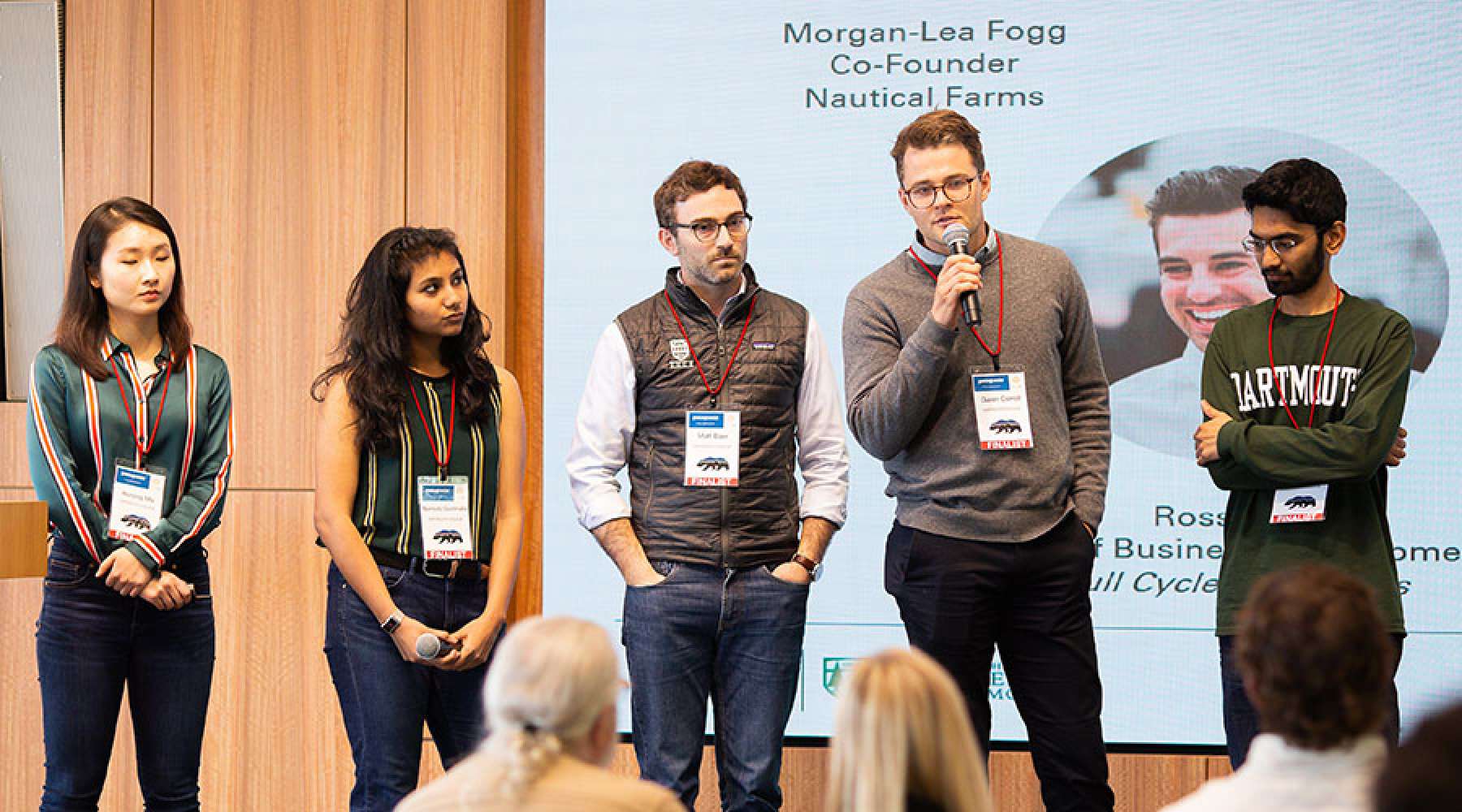
We never expected a case competition would become one of the highlights of our time here at Tuck, but the 2019 Patagonia Case Competition proved us very wrong. We couldn’t be more proud of the work that our joint Tuck/Thayer team accomplished in the last two months. It was a demonstration of the amazing connections and ideas that can come from this place. This year’s case question was, “How can Patagonia Provisions produce all its food products in packaging that is reusable, biodegradable, renewable, or easily recyclable by 2025?” We knew that the right solution to this question required diverse perspectives and expertise, which motivated us to reach beyond the walls of Tuck and put the call out to our neighbors at Thayer. Three MEM students, Pratik, Namrata, and Ruiying, responded, and we are sure glad they did.
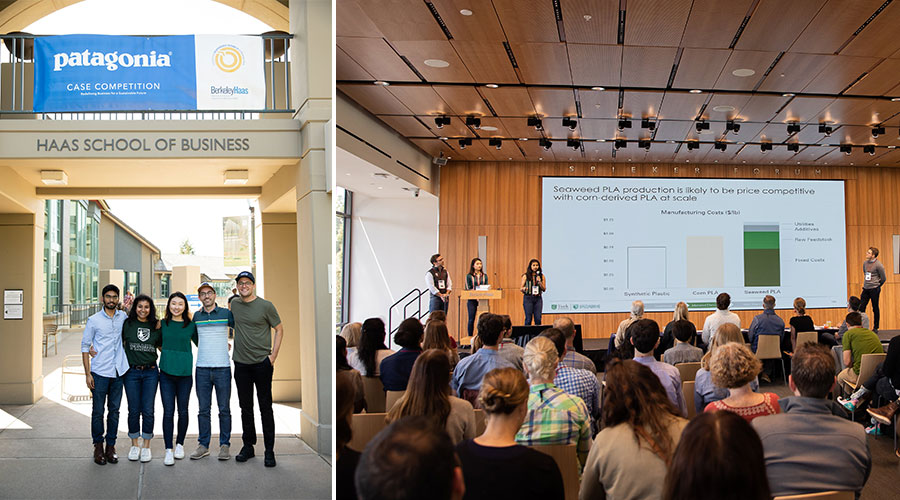
Our proposal was straightforward, but potentially transformative. We pitched seaweed as a feedstock to produce marine compostable bioplastics. This approach addressed Patagonia’s primary concerns when it comes to its packaging: 1) that it come from renewable sources, 2) that it meet all material property requirements, and 3) that its end-of-life process is sustainable.
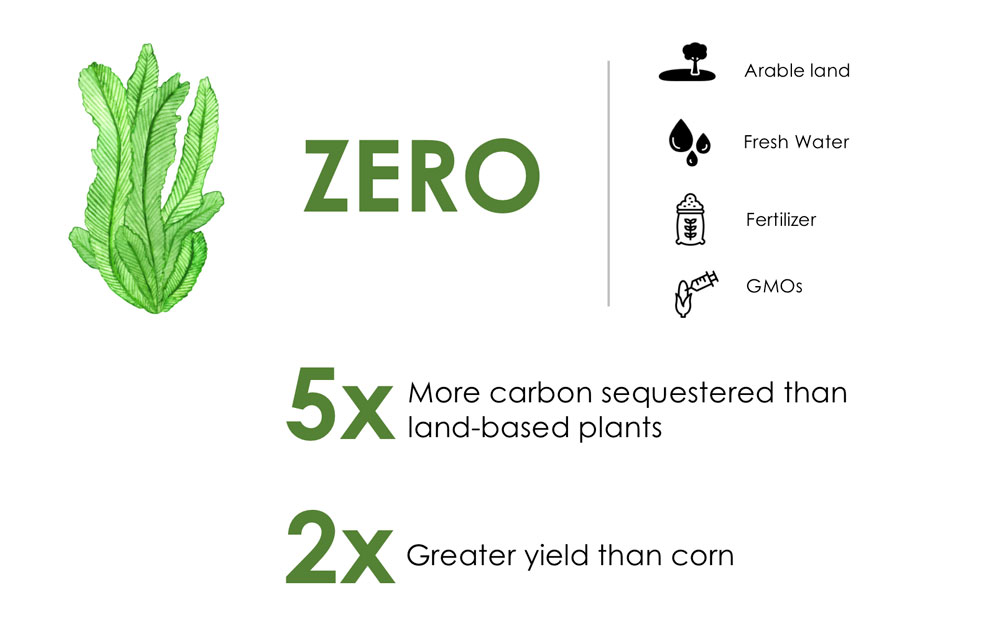
After targeting seaweed, the Thayer team analyzed the manufacturing process required to convert the feedstock into bioplastic film and assess the ability for seaweed-based bioplastics to meet Provisions’ packaging requirements. Their findings led to a two-step path forward.
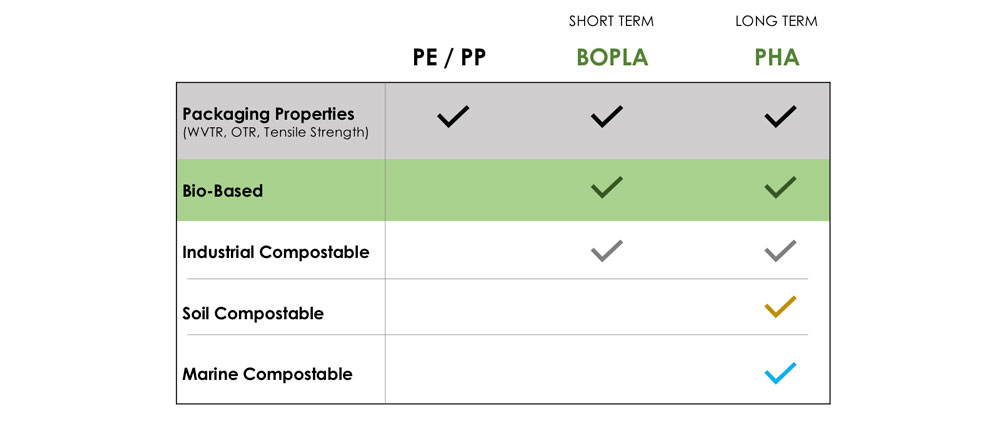
Seaweed could immediately be made into BOPLA, the most prevalent bioplastic (think: Greenware) and integrated into current packaging processing lines. Within five years, we estimated that BOPLA production could be converted to PHA, a bioplastic fully compostable in soil and the ocean. Our unit economic analysis showed that production would be competitive with synthetic, oil-based plastics (PP/PE) at scale. We also researched the numerous positive externalities that accompany seaweed production, including the revival of coastal economies. The final component of our proposal included launching a pilot project in Maine, the largest seaweed producing state in the United States.
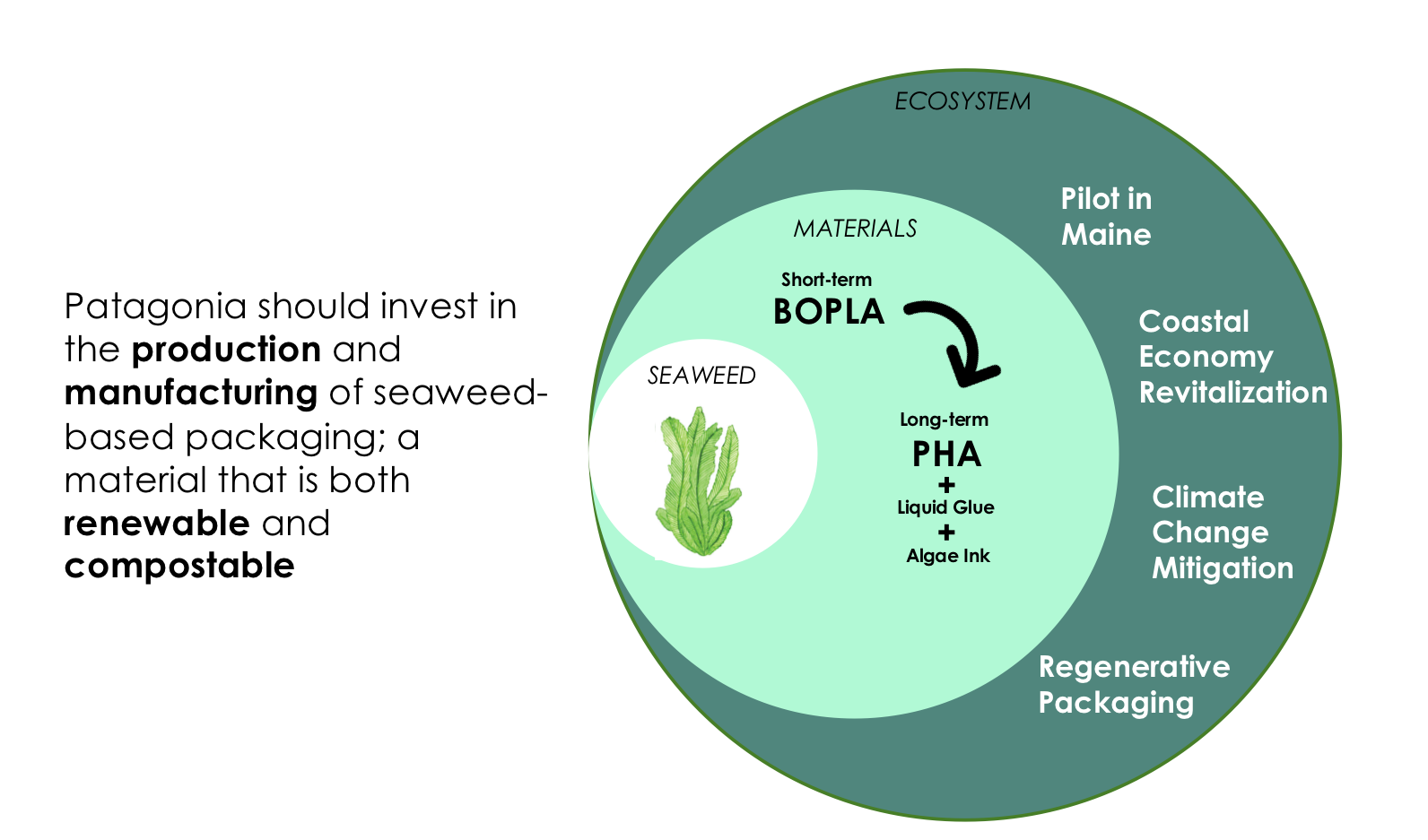
What began as a meeting of new faces in January over a common set of interests and values ended in April as one of the top 10 teams out of 130 to present our proposal to the senior leadership at Patagonia. Our two days at Haas included an inspiring fireside chat with Patagonia’s COO, Doug Freeman, who allowed us to peer into a corporate culture that has reached a religious fervor. It is derived from a shared strategic mission, “to save our home planet.” It unifies employees with a purpose, from store clerks to childcare center instructors, and is more effective than any advertising campaign. As the Robert Strand (Executive Director for the Haas Center for Responsible Business) said so eloquently: “for Patagonia, profits are like oxygen; necessary to sustain life, but a terrible thing to live for.”
Despite the competitive aspect of the gathering, Patagonia and our hosts at Haas created an environment that stressed the need for collective action and community building. Coming together with nine other teams from around the country (and one from Canada) left us motivated and excited about the future. While we didn’t come away with the top prize, we have been energized by all of the incredible people we met and ideas we spent months thinking about. The best part is that the story doesn’t end here for us. Namrata was recruited through the competition and will be joining Tin Shed Ventures (Patagonia’s venture fund) this summer as an intern, and the rest of the team is still thinking about how we might make seaweed bioplastics a reality someday.
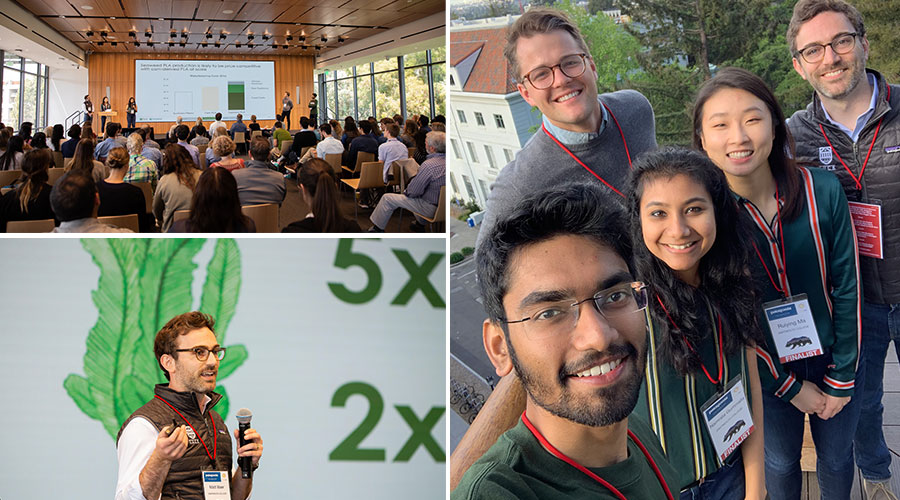
Photography by Manali Anne Photography, Illustration by iStock: Color_Brush